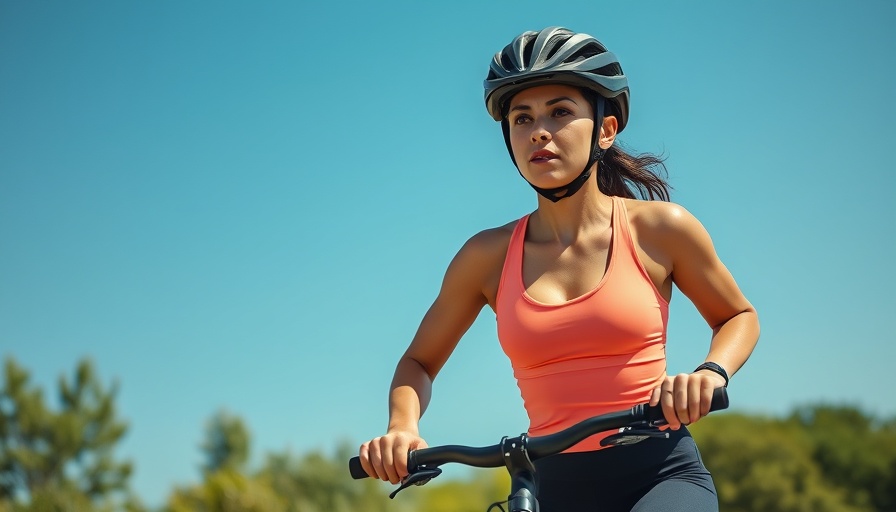
Exploring the Battle Against Belly Fat: Cycling vs Running
As many health enthusiasts embark on their journey toward better physical fitness, the debate over which exercise reigns supreme for reducing stubborn belly fat continues to capture attention. Both cycling and running have their unique advantages, offering effective cardiovascular workouts that can lead to weight loss and improved overall health. But when it comes to targeting that pesky belly fat, which one stands out?
The Importance of Addressing Belly Fat
Belly fat isn’t just an aesthetic concern; it also poses significant health risks. Excess visceral fat can increase the likelihood of serious health conditions, including heart disease, diabetes, and metabolic syndrome. Recognizing the need to eliminate belly fat can prompt lifestyle changes, including dietary adjustments and physical activity. Among the many options available, two popular choices are cycling and running. Let’s delve deeper into what each activity offers.
Benefits of Cycling: A Low-Impact Approach
Cycling is an excellent cardiovascular exercise that provides several key benefits:
- Heart Health Improvement: Elevating the heart rate through cycling enhances blood circulation and oxygen flow. Research indicates that regular cycling can raise levels of good cholesterol (HDL) while decreasing bad cholesterol (LDL), contributing to improved heart health.
- Caloric Burn: On average, cycling can help burn approximately 300 calories per hour. When combined with a healthy diet, this calorie deficit can aid in losing visceral fat, including belly fat.
- Joint-Friendly Workout: For individuals with joint pain or obesity, cycling offers a low-impact alternative to running. It’s gentle on the knees and ankles, making it an inclusive option for many.
- Muscle Strengthening: Cycling primarily targets major lower-body muscles—including the quadriceps, hamstrings, and calves—helping to build strength over time.
The Power of Running: A High-Impact Solution
Running is a form of exercise that brings a variety of benefits to the table, including:
- Higher Caloric Burn: In comparison to cycling, running can burn approximately 400 calories per hour and is considered a high-impact exercise. A study published in The Journal Of Sports Medicine and Physical Fitness shows that conscientious running can lead to a significant reduction in fat mass over time.
- Strengthening the Heart: Running elevates the heart rate quickly, facilitating improvements in heart function, blood pressure, and lung capacity. The cumulative effect leads to long-term heart health benefits.
- Bone Density Boost: Since running involves impact with the ground, it helps strengthen bones, particularly in the legs and hips, potentially reducing osteoporosis risks.
- Muscle Toning: Regular running engages and tones multiple muscle groups, particularly in the legs and core, providing a full-body workout that contributes to overall muscle development.
Making the Right Choice
So, which exercise is better for belly fat—cycling or running? The answer is not a one-size-fits-all scenario. It largely boils down to personal preference, existing injuries, and overall fitness goals.
If you find cycling more enjoyable or have knee concerns, you might lean toward biking as a sustainable workout. Conversely, if you enjoy the rhythmic pounding of feet on pavement and are capable of high-intensity workouts, running might be your best bet. Both exercises can effectively contribute to fat loss when paired with healthy dietary choices and regular physical activity.
Incorporating Both for Maximum Results
Incorporating both cycling and running into your fitness routine can be incredibly advantageous. Mixing low-impact cycling with high-impact running can keep workouts interesting while targeting different muscle groups, ultimately enhancing fat-loss efforts. Additionally, varying workouts can prevent mental burnout associated with repetitive exercise routines.
Final Thoughts and Action Steps
As you opt for the best exercise to reduce belly fat, consider your preferences, your body's response, and your fitness goals. Remember, staying fit is about finding what you enjoy so that maintaining an active lifestyle becomes second nature.
To enhance your fitness journey, consult a health or fitness professional for personalized advice on exercise selection and a tailored workout plan. Your choices today can lead to a healthier heart and a stronger body tomorrow!
 Add Row
Add Row  Add
Add 




Write A Comment